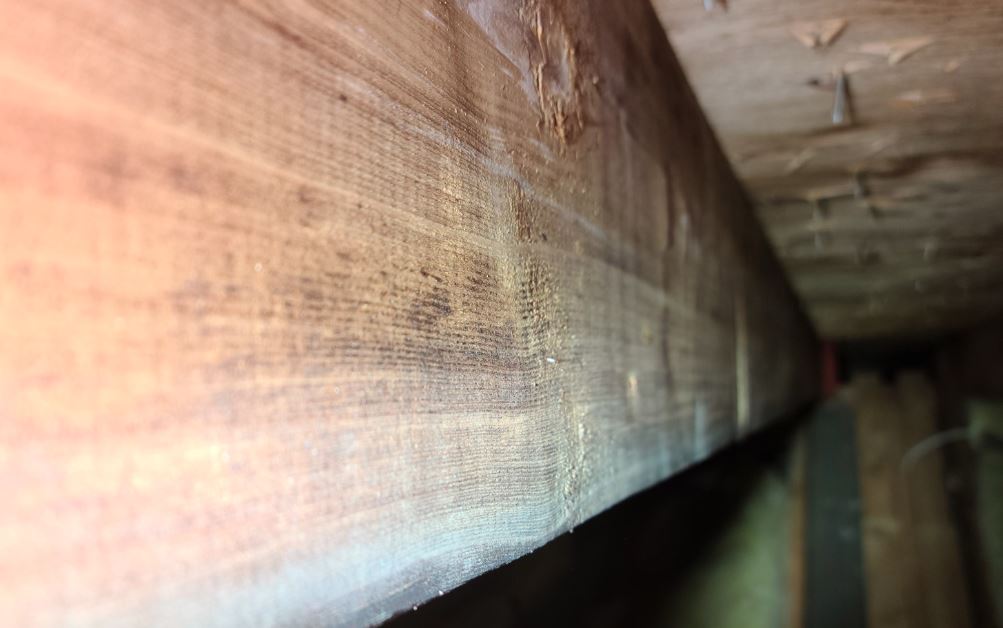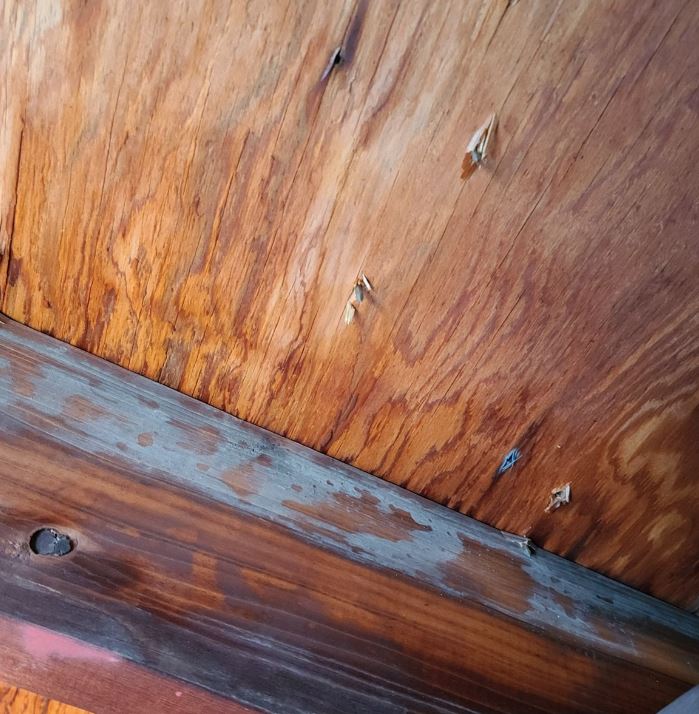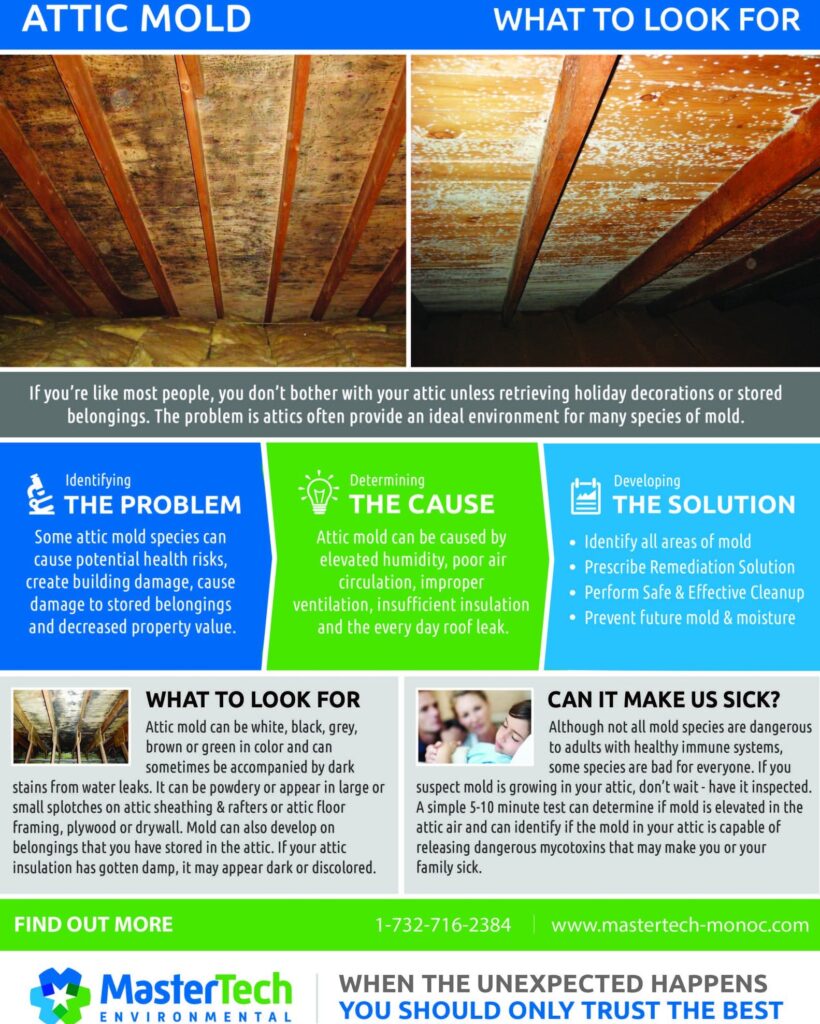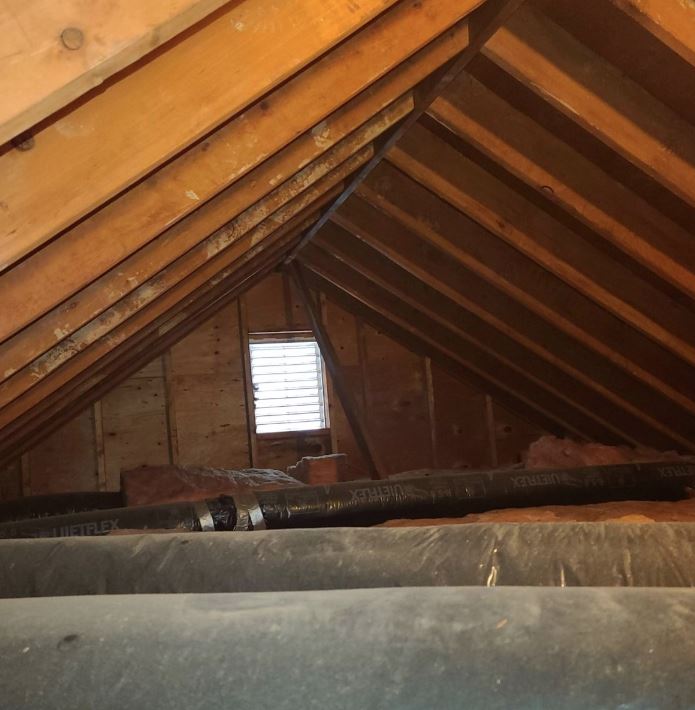
Detecting the presence of mold in your New Jersey home is the first step to effectively remove mold from attic spaces. Here are some tips for how to spot mold in the attic.
It’s not unusual for folks to visit their attic just a few times a year. Unfortunately, neglect, moisture and darkness might encourage the growth and spread of mold.
Mold can spread through air ducts and harm your family’s health, despite the fact that it appears to be restricted to the attic. Attic mold can easily turn into an urgent problem with medical consequences and can also affect the value of your home.
Are you trying to determine if you have mold but are unsure of what to look for? Get a free quote for mold removal services from MasterTech Environmental Jersey Shore right away. We are a neighborhood business that offers a Guarantee on all of our services to make sure that our clients are happy.
Understanding Attic Mold
Attic mold is a common problem in many homes, especially in areas with high humidity and poor ventilation. It can grow on various surfaces, including attic sheathing, roof sheathing, and insulation. Mold growth in the attic can be caused by roof leaks, condensation, and poor ventilation. Understanding the causes of attic mold is essential to prevent its growth and remove it effectively.
Attic mold can cause various health issues, including allergies, respiratory problems, and skin irritation. It can also damage the structural integrity of the roof and attic, leading to costly repairs. Therefore, it is crucial to address attic mold growth promptly and effectively.
Do you think The Attic In your New Jersey Home or Business has mold?
Here are some signs to look for:
Look For Spots of Discoloration
Search for colored spots all over the attic area to determine whether there is mold in your attic. Your own visual inspection is one of the simplest things to do.
Mold often has colors that stand out from their surroundings, including pink, yellow, orange, or white. While none of these mold species are hazardous right away, they can lead to problems.
Gray and black are other colors to be cautious of. These often spread more quickly throughout the attic and can be more dangerous than other varieties of mold. Many people have heard that black mold found in homes is toxic.
Long-term exposure to black mold, an example would be through the air vents in your attic, can cause serious health issues like memory loss and respiratory trouble.
Humidity
There’s a significant probability that you could have mold in your attic if you’ve recently experienced water damage from a storm or have noticed a leak coming from upstairs.
Mold is a fungus, thus it doesn’t require light to grow. However, it does require oxygen and water. Therefore, there is a chance that mold will grow near any source of constant moisture in your house.
Finding a long-term solution, not just a band-aid, for any leaks you discover in your attic is crucial. When the conditions are unfavorable for future growth, mold has the ability to go dormant. So if it’s exposed to light or has dried out significantly, or if you scrub it off of the surface of where you find it, it may stop growing for a while, but it doesn’t die. It could then reactivate in the future.
Using a spray bottle, you can apply a mixture of vinegar and water directly to the affected areas to help remove mold.
If the source of the moisture in your attic isn’t removed, there’s a potential that the mold will return quickly if more water is discovered. You may get back on track to having a healthy home by repairing leaks or water damage and hiring a professional to remove any residual mold.

Call 732-716-2384 or Contact Us Now for a Mold Inspection and a Quote for Attic Mold Removal in New Jersey

Search for patterns and shapes
On wooden surfaces, mold typically appears as large, ugly splotches that come in a variety of colors including white, grey and green. Since we rarely visit our attics or move things around up there, the environment can go undisturbed for some time. You may even have minor leaks from the roof or pipes and you may not discover them for a while.
Mold that develops in a predictable way is something to watch out for.
As black mold spreads, it frequently forms exact circles or crescent moon shapes. If you notice this kind of growth, you’re not dealing with your typical mold and you should get in touch with a specialist quickly once to have it removed correctly and completely.
You and your family’s health may be at risk if you don’t get rid of this kind of mold.
Disgusting odors
This one can be challenging to recognize as mold.
Mold frequently emits an unpleasant odor that smells dirty and musty. Some people might even think it smells like urine, which is actually a common complaint.
Due to rising heated air and undisturbed dust that settles for months at a time, attics unfortunately also have a stuffy, stale scent to them.
But it’s that damp smell that is the one to look out for. There are many mold species that smell kind of like wet newspaper.
If you do detect a musty or wet odor in your attic, search for other indications that mold might be growing. This is particularly important if you find moisture in your attic because water by itself doesn’t smell as bad as mold does.
Health Problems
A common indication that there may be a problem with the air in your home is the abrupt start of health problems. This obviously indicates that mold is most likely the blame.
Due to the similarities between these problems and allergic reactions, it can be challenging to determine where they originate. There are some, nonetheless, that you must watch out for:
- worsens or develops asthma
- throat discomfort
- watery eyes and itchy skin
- persistent coughing
- general weariness
- congestion
The majority of these symptoms could be caused by a typical cold. But if they persist for more than two or three weeks, the cause might be untreated attic mold.
Once you take steps to remove the mold that is forming in your home, the symptoms of mold usually go away. However, poisonous mold species (like black mold) can harm occupants of the house permanently.
No matter what kind of mold you have, it’s better to remove it as soon as you can to prevent any health problems in the future.
Finding Mold Is Just The Beginning
The next step after discovering the mold is to make sure that it is removed fast and by experienced professional mold removal specialists so that you and your family may breathe safely inside your home.
The remediation (mold removal, clean-up, and abatement) of the mold fungi will be determined by the actual type of mold that’s growing in your attic. The affected air quality will be restored as well once the source of the moisture has been addressed.
Personal Protection
To guard against contamination, the attic mold remediation contractor should wear personal protective equipment (PPE). The home’s inhabitants and currently unaffected areas should be protected from exposure at all costs throughout restoration using effective mold containment strategies.
During remediation, all impacted locations must be kept under control. The containment should be built using at least 6-mil-thick polyethylene sheathing, with a “zipper” confinement being the preferable design. Until a post-remediation report is generated demonstrating that the remediation effort has effectively solved the problem, containment should remain in place. Except for the remediation contractors or the indoor air quality specialist, no one else should enter or even touch a containment without express permission.
Material Handling
If any moldy or damaged materials from the remediation effort are to be moved through “clean” areas before disposal, they must be sealed in 6-mil polyethylene bags.
Hard, Semi Porous Materials and Porous Surfaces
Surfaces like steel studs or joists, hard, unlined HVAC ducts, concrete, glass, or plastic. An EPA-registered disinfectant and mold killer is used to remove the mold.
Wood goods like paneling, furniture, and wood studs or joists are examples of semi-porous materials. The material can be wire-brushed to remove any apparent mold and/or bacteria, cleaned and coated with an EPA-registered coating that resists mold if the structural integrity of the material has not been damaged and access to the area can be provided for proper treatment. Removal of the material is required to ensure cleanup if the structure is damaged or if sufficient access cannot be acquired.
Gypsum drywall, boxes, paper goods like newspapers and books, cabinets, carpeting, OSB, soft furniture, or other particle-board are examples of porous surfaces. It is always preferable to replace the damaged material rather than keeping it around. HEPA vacuuming and cleaning are probably only a temporary fix. To get rid of any mold spores, clothing needs to be cleaned properly. Consider disposing of anything you don’t need in this situation. This is an excellent opportunity to get rid of clothing that is no longer being worn.
All the affected framing should be wire-brushed or sanded, and all exposed framing should be cleaned in accordance with the directions above. To the framing and roof decking, apply EPA-registered Mold Resistant Coating. If the work area is too challenging to sand or wire brush, an advanced abrasion technique could be applied.
Specialists in attic mold removal have expertise and understanding in the field. They are aware of the precise corners and edges to search around. While DIY can be effective in some cases, hiring a professional will only improve the condition of your attic and keep your family safe from exposure. It is advisable to bring in expert services because they are well-equipped and know which products and mold removal methods are suitable for your attic. They follow a thorough procedure, which will protect you from the risks associated with mold removal and exposure to mold spores.
Attic Mold Removal Methods
There are several methods to remove mold from attics, each with its own advantages. Dry ice blasting is an effective method for removing mold from tight spaces and gaps. This technique uses dry ice pellets to blast away mold without damaging the underlying surfaces. Chemical treatments, while potentially hazardous, can be highly effective when using anti-microbial chemicals designed to kill mold. For those who prefer a more natural approach, remedies such as white vinegar and tea tree oil can also be used to remove mold.
Choosing the right removal method depends on the severity of the mold infestation and the type of surface affected. Professional mold removal specialists can help determine the best removal method and ensure safe and effective removal.
Protocol for Attic Mold Remediation
- All water (moisture) invasions must be fixed.
- Build suitable containment at the attic entrance.
- Clean, store, or remove all items from the impacted area
- During remediation, keep the relative humidity in the work area at 50% or lower.
- Fix or replace framing that has water damage
Safety Precautions
Removing mold from attics can be hazardous, and proper safety precautions are essential. Wearing protective gear, including masks, gloves, and eye protection, is crucial when removing mold. Ensuring good ventilation in the attic is also essential to prevent the spread of mold spores.
It is also important to contain the affected area to prevent mold spores from spreading to other parts of the attic or home. Using plastic sheeting and sealing off the area can help prevent mold spores from spreading.
Preventing Future Mold Growth
Preventing future mold growth is crucial to maintaining a healthy and safe living environment. Ensuring proper ventilation in the attic is essential to prevent moisture buildup and mold growth. Installing soffit vents and ensuring that they are functioning properly can help improve ventilation in the attic.
Regular inspections and maintenance can also help prevent mold growth. Checking for roof leaks, condensation, and poor ventilation can help identify potential mold growth issues before they become severe.

Why pick MasterTech to remove mold in your New Jersey Attic?
You need more than to just be able to recognize mold to remove it effectively. You have to find a mold issue with a mold inspection first in order to be solved. MasterTech offers mold removal services including
Figuring out the cause of the mold development and the mold infestation area in your attic. Mold containment with proper precautions taken to prevent spore dispersal. Mold removal professionals employing the necessary tools to remove mold. Deodorization and cleaning are done as part of remediation to return your attic to its previous state.
MasterTech gives homeowners effective professional service and restores their attics to be free of mold in Monmouth County, Ocean County, Atlantic County and Cape May County, New Jersey. Our experts are very skilled at what they do, and they put you at ease and in comfort while doing it.
Your attic issue can be resolved quickly and easily with a phone call.
Importance of Professional Remediation
While DIY mold removal methods can be effective for small areas, professional remediation is often necessary for larger areas or severe mold infestations. Professional mold removal specialists have the equipment, resources, and expertise to safely and effectively remove mold.
A reputable mold remediation company should be chosen based on their reputation and comfort level. It is essential to research and compare multiple mold remediation companies before hiring one. A “Scope of Work” should be outlined by the remediation company to ensure transparency, and hidden fees should be asked about and avoided.
Regular maintenance and inspections can help prevent future mold growth and ensure a healthy and safe living environment.
